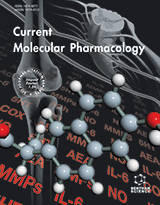Abstract
Cystic fibrosis (CF) is a hereditary disease caused by mutations in the gene encoding the chloride channel “cystic fibrosis transmembrane conductance regulator” (CFTR). The lack of functional CFTR in CF airways leads to impaired ion and fluid homeostasis of the fluid layer which lines the airway surfaces (ASL). The ASL is important for proper ciliary beat and clearance of mucus from the airways. According to the “low volume hypothesis”, CF airway epithelia hyperabsorb sodium via the epithelial sodium channel (ENaC). Although the contribution of ENaC to CF pathogenesis is still under debate, there is convincing data demonstrating that re-hydration of the ASL might improve mucociliary clearance in CF patients. ASL re-hydration might, amongst other things, be achieved by a block of airway transepithelial sodium absorption with inhibitors of ENaC. This mini-review article describes the role of ENaC in ASL fluid homeostasis and rehydration, and summarizes the current state of the art in the discovery and establishment of compounds which inhibit ENaC activity and may represent pharmacological tools for the treatment of CF.
Keywords: Airway surface liquid, amiloride, CFTR, cystic fibrosis, ENaC, inhibitor, sodium transport.
Current Molecular Pharmacology
Title:ENaC Inhibitors and Airway Re-hydration in Cystic Fibrosis: State of the Art
Volume: 6
Author(s): Mike Althaus
Affiliation:
Keywords: Airway surface liquid, amiloride, CFTR, cystic fibrosis, ENaC, inhibitor, sodium transport.
Abstract: Cystic fibrosis (CF) is a hereditary disease caused by mutations in the gene encoding the chloride channel “cystic fibrosis transmembrane conductance regulator” (CFTR). The lack of functional CFTR in CF airways leads to impaired ion and fluid homeostasis of the fluid layer which lines the airway surfaces (ASL). The ASL is important for proper ciliary beat and clearance of mucus from the airways. According to the “low volume hypothesis”, CF airway epithelia hyperabsorb sodium via the epithelial sodium channel (ENaC). Although the contribution of ENaC to CF pathogenesis is still under debate, there is convincing data demonstrating that re-hydration of the ASL might improve mucociliary clearance in CF patients. ASL re-hydration might, amongst other things, be achieved by a block of airway transepithelial sodium absorption with inhibitors of ENaC. This mini-review article describes the role of ENaC in ASL fluid homeostasis and rehydration, and summarizes the current state of the art in the discovery and establishment of compounds which inhibit ENaC activity and may represent pharmacological tools for the treatment of CF.
Export Options
About this article
Cite this article as:
Althaus Mike, ENaC Inhibitors and Airway Re-hydration in Cystic Fibrosis: State of the Art, Current Molecular Pharmacology 2013; 6 (1) . https://dx.doi.org/10.2174/18744672112059990025
| DOI https://dx.doi.org/10.2174/18744672112059990025 |
Print ISSN 1874-4672 |
| Publisher Name Bentham Science Publisher |
Online ISSN 1874-4702 |
 229
229
- Author Guidelines
- Bentham Author Support Services (BASS)
- Graphical Abstracts
- Fabricating and Stating False Information
- Research Misconduct
- Post Publication Discussions and Corrections
- Publishing Ethics and Rectitude
- Increase Visibility of Your Article
- Archiving Policies
- Peer Review Workflow
- Order Your Article Before Print
- Promote Your Article
- Manuscript Transfer Facility
- Editorial Policies
- Allegations from Whistleblowers
- Announcements
Related Articles
-
Effects of Static Magnetic Fields on Blood Pressure in Animals and Humans
Current Hypertension Reviews The Fall in Older Adults: Physical and Cognitive Problems
Current Aging Science Pharmacological Aspects of (-)-Deprenyl
Current Medicinal Chemistry Overlapping Molecular Signatures in Parkinson's Patient Leukocytes Before and After Treatment and in Mouse Model Brain Regions
CNS & Neurological Disorders - Drug Targets Synthetic Pulmonary Surfactant Preparations: New Developments and Future Trends
Current Medicinal Chemistry Towards Retinoid Therapy for Alzheimers Disease
Current Alzheimer Research Novel Biomarkers of microRNAs in Gastric Cancer: An Overview from Diagnosis to Treatment
MicroRNA Endothelins and the Role of Endothelin Antagonists in the Management of Posttraumatic Vasospasm
Current Pharmaceutical Design New Anti-Tuberculosis Drugs with Novel Mechanisms of Action
Current Medicinal Chemistry Psychological and Mental Health Issues During the SARS-CoV-2 Global Pandemic: A Critical Analysis
Coronaviruses Psychopharmacological Interventions for Adolescents with Eating Disorders
Adolescent Psychiatry Differences in Saccadic Eye Movements in Subjects at High and Low Risk for Panic Disorder
Current Pharmaceutical Design A Systemic Review of Adult Mesenchymal Stem Cell Sources and their Multilineage Differentiation Potential Relevant to Musculoskeletal Tissue Repair and Regeneration
Current Stem Cell Research & Therapy New Developments in Matrices for Ocular Surface Reconstruction
Current Tissue Engineering (Discontinued) Chemotherapy-Induced Peripheral Neuropathic Pain and Rodent Models
CNS & Neurological Disorders - Drug Targets In Vitro Metabolism Studies of New Adenosine A Receptor Antagonists
Drug Metabolism Letters Endothelial Cell Regulation of Cardiac Metabolism Following Diabetes
Cardiovascular & Hematological Disorders-Drug Targets A Review: Hair Health, Concerns of Shampoo Ingredients and Scalp Nourishing Treatments
Current Pharmaceutical Biotechnology The Neuropharmacology of Implicit Learning
Current Neuropharmacology Meta-Analysis of Anticancer Drug Structures - Significance of Their Polar Allylic Moieties
Anti-Cancer Agents in Medicinal Chemistry


























